Arming the Irish Republican Army during the War of Independence was not an easy task; weapons, particularly modern ones, were not readily available. In the countryside shotguns were common, as most farmers owned one. The IRA also gathered firearms such as rifles, even Lewis machine guns, and ammunition from the many raids conducted on Royal Irish Constabulary barracks around the country. Arms were also smuggled into Ireland. In 1921 Harry Boland ordered over 650 Thompson machine guns (made iconic by the US Mafia during the 1920s and 1930s) from America, and though most were intercepted on the docks in New York, some did make it to Ireland via Liverpool in England.
Such weapons made little impact on the armoured vehicles of the British Forces however, or the strong walls of barracks buildings, and heavier guns were necessary. Unable to acquire them, the IRA turned to improvising weapons to serve their needs. This home made ‘big gun’, or mortar, designed to fire mortar bombs at short-range targets, was described as the only piece of such artillery used by the Irish during the War of Independence when it was donated to the museum in 1937.
The story of this mortar is an interesting insight into the making of improvised munitions during the War of Independence, but it is also a tragedy which led to the death of Matthew Furlong.
 The Furlongs of 19 South Main Street, Wexford town, had a Fenian family tradition. Matt and his brother Joseph were members of the Irish Republican Brotherhood (IRB) from 1908. He apprenticed as an engineer in the Wexford Engineering Company, but due to the labour wars and lockouts in Wexford in 1911 he and Joseph moved to London where they transferred to the London I.R.B., joining the same centre as Michael Collins. When the Irish Volunteers were formed in Ireland in November 1913, companies were also formed in the Irish centres in England. The Furlongs joined, and just after Christmas 1915, received word from Collins to quit their jobs in London and relocate to Dublin to prepare for the Rising. Matt and Joseph fought with G Coy, 2nd Battalion at Jacob’s Factory during the 1916 Rising, and were interned in Frongoch Camp in Wales until December 1916. They returned to Ireland and their home at 70 Seville Place, Dublin, took employment (with Matt working for a time at the National Shell Factory on Parkgate Street during the war years) and resumed their activities in the I.R.A. Matt’s trade would prove useful, his engineering knowledge led to his involvement with the setting up of an underground munitions factory in 1918 by Michael Lynch of the Fingal Brigade, who had been charged with the task by Dick McKee.
The Furlongs of 19 South Main Street, Wexford town, had a Fenian family tradition. Matt and his brother Joseph were members of the Irish Republican Brotherhood (IRB) from 1908. He apprenticed as an engineer in the Wexford Engineering Company, but due to the labour wars and lockouts in Wexford in 1911 he and Joseph moved to London where they transferred to the London I.R.B., joining the same centre as Michael Collins. When the Irish Volunteers were formed in Ireland in November 1913, companies were also formed in the Irish centres in England. The Furlongs joined, and just after Christmas 1915, received word from Collins to quit their jobs in London and relocate to Dublin to prepare for the Rising. Matt and Joseph fought with G Coy, 2nd Battalion at Jacob’s Factory during the 1916 Rising, and were interned in Frongoch Camp in Wales until December 1916. They returned to Ireland and their home at 70 Seville Place, Dublin, took employment (with Matt working for a time at the National Shell Factory on Parkgate Street during the war years) and resumed their activities in the I.R.A. Matt’s trade would prove useful, his engineering knowledge led to his involvement with the setting up of an underground munitions factory in 1918 by Michael Lynch of the Fingal Brigade, who had been charged with the task by Dick McKee.
The munitions factory was established in the basement of 198 Parnell Street, underneath the bicycle shop of Heron & Lawless; Archie Heron was Lynch’s Vice-Commandant and Joseph Lawless an Engineer Officer, both of the Fingal Brigade.
The munitions factory was fully equipped, including a forge and a lathe. It was here that they made the iron exterior bodies of hand grenades, based on the pattern of German egg grenades, and the brass fittings for the fuses, which were transported to another location to be filled with explosive and finished.
 Lawless was arrested in a raid on the bicycle shop by British Forces in May 1919, and afterwards felt that because of his connection with the premises it would be more closely watched. In order to keep the profile of the building low and protect the factory, he sold his interests to Lynch. Archie Heron had already left the business some time before. By June Lawless had set up a separate business renting cars, which was also used to provide car transport to Volunteer raid parties, and munitions became the sole business of 198 Parnell Street. (The story of Joseph Lawless’ later internment in the Rath Camp in 1921 can be found in a previous blog post here).
Lawless was arrested in a raid on the bicycle shop by British Forces in May 1919, and afterwards felt that because of his connection with the premises it would be more closely watched. In order to keep the profile of the building low and protect the factory, he sold his interests to Lynch. Archie Heron had already left the business some time before. By June Lawless had set up a separate business renting cars, which was also used to provide car transport to Volunteer raid parties, and munitions became the sole business of 198 Parnell Street. (The story of Joseph Lawless’ later internment in the Rath Camp in 1921 can be found in a previous blog post here).
During mid 1920 it had been decided that there was a need for a portable heavy gun to aid in Barracks attacks, and work began on an experimental mortar. G.H.Q. Munitions branch decided to attempt to replicate the British Stokes, or Trench, mortar which had been produced during the latter part of WWI.
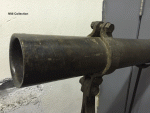
Artillery of this type is smooth bore rather than rifled, and used to propel explosive shells at a high angle towards targets with a much greater explosive capacity then a hand grenade. Matt and Joe Furlong undertook the task, although detailed drawings and instructions were not available.
When the mortar was complete in October 1920, testing began. Experiments with dummy shells were successful, a test site in Co. Meath was selected, and Matt Furlong, Peadar Clancy, Tom Young, Sean O’Sullivan and Patrick McHugh began the trial, with Matt as the operator. Difficulties arose with the firing of live shells, and adjustments were planned. Another trial at Kells took place where, after a number of tests, Matt decided to use a live shell which fired but landed unexploded. After further adjustment another shell was tested; this time it exploded inside the base of the mortar, blowing off the bottom half of the cylinder. Matt Furlong was very badly wounded, particularly along the left hand side of his body which had been closest to the mortar. He was brought to the Mater Hospital where his left leg was amputated, but he later died of his injuries at the age of 28.
With the loss of the mortar, the munitions factory at 198 Parnell Street, still operating under the name of ‘Heron and Lawless’, concentrated on grenade manufacture. It was eventually shut down by the Auxiliaries in December 1920, when it was accidentally discovered during a raid next door. The building that housed the munitions factory is now the location of King’s Inn House, beside the Parnell Centre.
The ‘big gun’ itself was hidden in the River Tolka for some years before it was recovered by John Connell of Lustown, Co. Meath, after his release from Arbour Hill Prison. He and Padraig O Huigin later deposited it in the National Museum of Ireland in 1937 for display in its 20th Anniversary exhibition in Kildare Street. It remains the only known example of an IRA Big Gun.

© Brenda Malone. This work is original to the author and requires citation when used to ensure readers can trace the source of the information and to avoid plagiarism.
https://libguides.ucd.ie/academicintegrity/referencingandcitation
Sources and general reading used in the creation of these articles are listed on the Further Reading page.
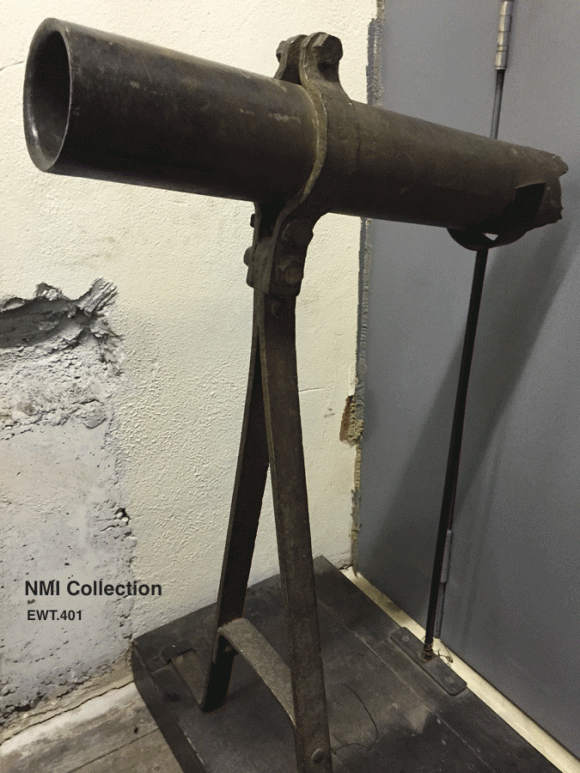
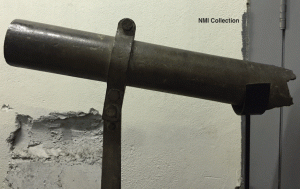
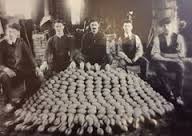

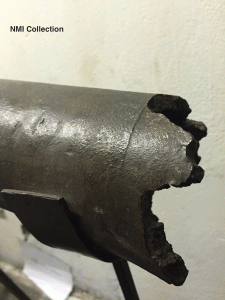

One reply on “The IRA ‘Big Gun’ and the Death of Matt Furlong, 1920”
[…] inspecting the 1920 experimental mortar, or ‘big gun’, made in the basement of 198 Parnell Street, Dublin, underneath the bicycle shop […]